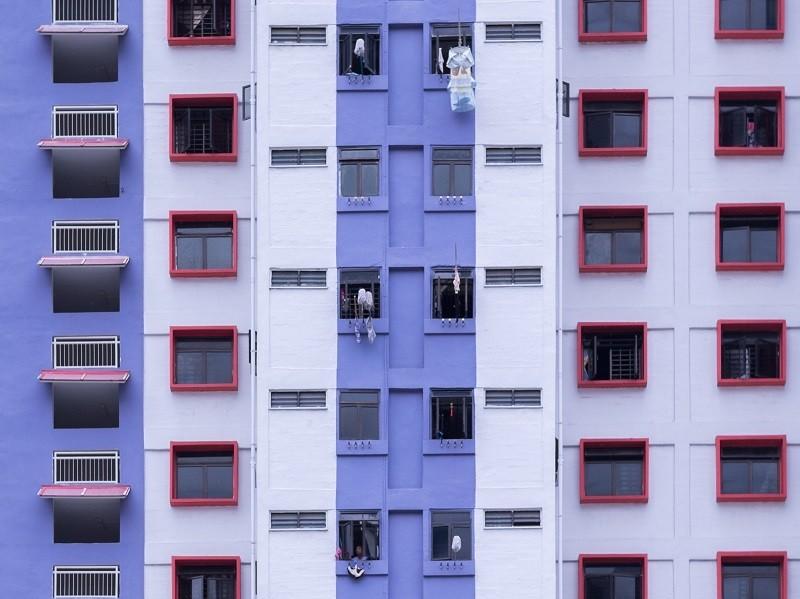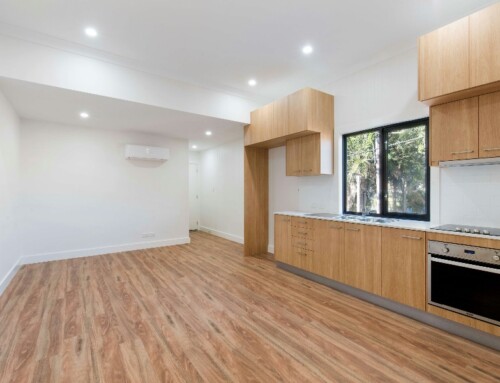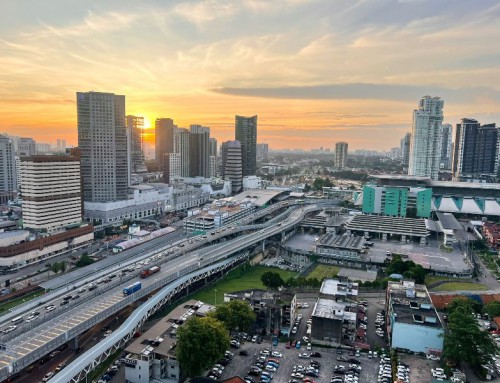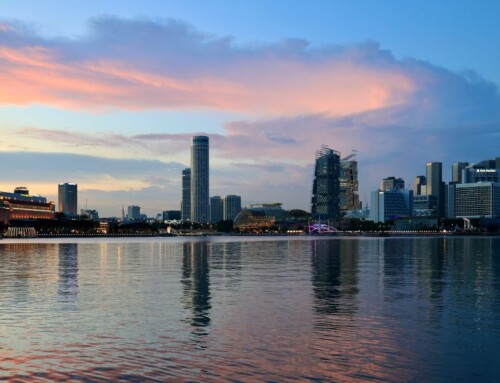Over the years I’ve had clients approach me and telling me that they would like to upgrade from their current HDB flat. The main reason is that they would like to upgrade their lifestyle and stay in a condominium with facilities. If the finances permit, I usually do encourage clients to make the upgrade for a variety of reasons. I do do some financial planning for them and in some instances, the clients were even able to afford to sell off their HDB and purchase 2 condominiums. In this blog post, I will briefly explain how this is possible.
In Singapore, about 80% of residents live in HDB flats. This is a large amount and a testament to the success of the system to provide affordable housing to everyone in Singapore. It would be good to note that this percentage is slowly but surely dropping. In 1988, 87% of the population lived in HDB flats. In 2015, the percentage dropped to 82%. A percentage drop does not mean a reduction in numbers. During that period, Singapore’s population increased a fair bit. The number of private property households grew much faster than the number of HDB households.
Thus we can establish a few distinctive trends moving forward.
1) The percentage of residents living in HDB flats will continue to fall.
As the resident population becomes more educated and more well off, they will demand better quality housing. To most, owning a condominium is seen as an upgrade over their current HDB housing. This can be seen from the 5% drop over the 15 years. In the next 15 years, the percentage of residents living in HDB flats should drop further. As incomes and education levels rise, so do expectations.
2) Most Singapore residents will continue to live in HDB flats.
HDB flats will remain affordable as the government ramps up demand to keep supply more than adequate. Purchasing a decent flat will be within reach for most. Even though there are HDB resale flats in prime areas that cost over a million dollars in the resale market, first timers can still benefit from very affordable HDB housing in non-mature estates. On top of that, the recent budget 2017 has seen an increase in the first timer grant. Thus keeping to the government’s pledge to help Singaporeans afford their own homes.
3) Singapore will remain a country with high home ownership.
Singaporeans and residents in Singapore are usually home proud. We will remain a nation whereby the majority of the population would want to own their own property rather than to rent. There is a running joke that in Singapore a man proposes to his future spouse by handing her an application to apply for a build-to-order HDB flat.
4) Singapore’s private property sector is still comparatively cheap.
We have to compare to cities in the same standing in terms of standard of living, security and quality of life. Of course, if we compare Singapore condominiums against those in places like Cambodia then yes Singapore’s condominiums may seem expensive. However when we compare Singapore to developed cities like Hong Kong and London then Singapore’s housing does seem cheap. In 2016 the average house price in Hong Kong for a property less than 40 square meters was HK$127,623 per square meter. This translates to SGD$2,156 per square foot. (SGD$1 = HKD$5.50). This is the average price for properties in all segments in Hong Kong. Luxury and mass market. In Singapore, you can get a property in the prime districts for that sort of price per square foot.
So then, what conclusions can we make from these trends? It is clear the HDB flats will always remain affordable for the masses. However, a condominium has more room for capital appreciation as this is a sector which is open to foreigners. Comparatively, Singapore is still affordable in terms of affordability. As time goes by and the Singapore resident population progresses on, we will see more demand for condominiums.
Thus, if you are holding on to an HDB, you may be holding on to a property with limited or no upside in value. As the property ages, it may decrease in value as well. When properties have less than 60 years lease on them, it may be harder to get financing and the amount of CPF that can be used to finance these properties drops. Thus it may be wise to consider this particular proposition of ours. There are 3 options you may consider when you think about upgrading your current property portfolio with just your HDB alone.
Let us consider the following scenario to facilitate my explanation.
The family in question is Mr and Mrs Tan and they have 2 children.
They live in a 4 room premium apartment in Punggol and the flat is valued at about $550,000.
The flat has been fully paid and now they wish to upgrade and rebalance their property portfolio.
They used a combination of cash and CPF to fund their Punggol flat.
They have a combined income of about $10,000 per month. Mr Tan earns $6,000 and Mrs Tan earns $4000.
This seems to be a typical household in Singapore.
Assumption 1: They are looking for a 2 bedroom condominium which will cost them $900,000.
Assumption 2: They have $200,000 in their CPF ordinary accounts. $100,000 in each of their accounts.
Assumption 3: They have $150,000 cash in their savings.
Option A: Sell off their HDB and buy a condominium
This is quite straightforward. They hire an agent to try to achieve a good price and afterwards purchase a condominium within their budget. When they dispose of the Punggol flat, they will receive their sales proceeds which can then be used to purchase the 2 bedroom condominium.
Sale price: $550,000
Total cash from sales proceeds = $250,000
CPF Refund for Mr Tan = $150,000
CPF Refund for Mrs Tan = $150,000
Option B: Keep the HDB flat and buy a 2 bedroom condominium
2 bedroom condominium: $900,000
5% Cash: $45,000
15% CPF: $135,000
Stamp Duty: 3% – $5,400 = $21,600 (CPF)
Additional Buyers Stamp Duty: 7% of 2nd property = $63,000
Things to take note for their 2nd property.
- The prevailing minimum sum is $166,000. The couple must set aside half of this amount ($83,000) before using the rest towards the purchase of their second property.
- The CPF withdrawal limit for the 2nd property is 100% of valuation limit or purchase price, whichever is lower.
Total CPF required = $156,600.
However, they only can use $117,000 of their CPF monies as they need to set aside $83,000 of their CPF. This means that the balance of $39,600 will have to be paid in cash.
Total CPF outlay = $117,000
Total Cash outlay = $147,600
Monthly instalment = $2,661 (Based on 2% interest and 30 year loan tenure)
In summary,
Start:
Mr and Mrs Tan had 1 HDB flat in Punggol, $200,000 in CPF savings and $150,000 in cash.
End:
Mr and Mrs Tan have a 2 bedroom condominium for their own stay, $83,000 in CPF savings and $2,400 in cash.
Option C: Sell the HDB flat and buy a 3 bedroom condominium in Mr Tan’s name and a 1 bedroom in Mrs Tan’s name
3 bedroom condominium is for the family’s use and the 1 bedroom condominium is for investment purpose.
Sale of 4 room flat
Sale price: $550,000
Total cash from sales proceeds = $250,000
CPF Refund for Mr Tan = $150,000
CPF Refund for Mrs Tan = $150,000
The couple has $200,000 in their CPF ordinary accounts. $100,000 in each of their accounts.
They have $150,000 cash in their savings.
Amount of CPF in Mr Tan’s CPF account: $250,000
Amount of CPF in Mrs Tan’s CPF account: $250,000
Amount of cash on hand: $400,000
Mr Tan will purchase a 3 bedroom condominium
3 bedroom condominium: $1,100,000
5% Cash: $55,000
15% CPF: $165,000
Stamp Duty: 3% – $5,400 = $27,600 (CPF)
Total CPF outlay = $192,600
Total Cash outlay = $55,000
Monthly instalment = $3,352 (Based on 2% interest and 30 year loan tenure)
Mr Tan still has $57,400 in his CPF account
Mrs Tan will purchase a 1 bedroom condominium for rental income
1 bedroom condominium at city fringe: $750,000
5% Cash: $37,500
15% CPF: $112,500
Stamp Duty: 3% – $5,400 = $17,100 (CPF)
Total CPF outlay = $129,600
Total Cash outlay = $37,500
Monthly instalment = $2,217 (Based on 2% interest and 30 year loan tenure)
Mrs Tan still has $120,400 in her CPF account
Advantages
i) The couple has $307,500 in emergency cash savings after selling their HDB and buying 2 condominiums. Mr Tan also has $57,400 in his CPF account balance and Mrs Tan has $120,000 in her CPF account balance.
ii) The 1 bedroom condominium can be rented for approximately $2,800 (Based on prevailing rents in Queenstown area). This will create a positive cash flow. Mrs Tan can finance for the 1 bedroom with her CPF yet receive her rental income in cash.
iii) They did not fork out any monies for additional buyers stamp duties.
iv) They ended up with 2 private properties which should provide better upside in value than their HDB in Punggol.
In summary,
Start:
Mr and Mrs Tan had 1 HDB flat in Punggol, $200,000 in CPF savings and $150,000 in cash.
End:
Mr and Mrs Tan have a 3 bedroom condominium for their own stay, 1 city fringe condominium for investment (the rental pays for the instalment), $177,400 in CPF savings and $307,500 in cash.
Disclaimer: Everyone’s financial situation is different. Before deciding on which of the following options to take, please consult your property agent, financial advisor and mortgage broker. There are some assumptions made in this calculation. For example, for Mr and Mrs Tan need to be both employed. Please note that there are many ways of going about doing property investment. I do not endorse any method as the best method for investing in property. Rather, individuals should understand that they should be comfortable with the investment plan that is recommended to them by their property agent or financial advisor.
You may download a free financial calculator to put in your own figures to see whether this calculation works for you. Click here to visit the page to download the calculator.
Yours Sincerely,
Daryl Lum
www.daryllum.com






